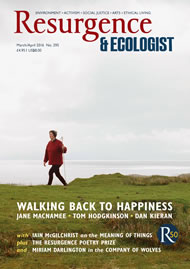The State Hermitage Museum in St Petersburg, Russia is probably the largest museum in the world, in terms of both its buildings and its encyclopaedic collections. But it is interesting to note that it stands almost alone in its rejection of consumerism. In his new book the director, Mikhail Piotrovsky, explains which of his visitors he rates as of the highest importance: “Crowds of tourists generate money, but our special focus is on the free visitors – children, students and pensioners who have proved their lifelong loyalty to the Hermitage. We have one million free visitors a year.”
He is clear in his belief in the importance of education, building the culture of the next generation. “The Hermitage brings joy and education to people. It teaches through pleasure and it teaches many things. The tale of the continuity of human culture underlies all of the exhibitions, as do the eternal themes that we all ponder with the help of art… People always speak about the same thing, but they speak in a complicated way and the museum teaches this complexity from childhood.”
Piotrovsky is an exceptional director and has the Hermitage in his blood. He has been director for 24 years and his father was director before him for 26 years. He has expanded the museum, opening branches in Amsterdam, Kazan and Vyborg – with more to come. In St Petersburg itself he has doubled the gallery space in the historic buildings that surround Palace Square and added three outlying historic buildings to the complex, as well as his spectacular open storage on the outskirts of the city.
The idea of a museum came to St Petersburg with Peter the Great, who founded the city in 1703 and turned it into his capital in 1711. He built a Kunstkammer, the German idea of a collection, mixing natural history, paintings by Rembrandt, ivory carvings… literally a cabinet of curiosities. Piotrovsky describes it as “the first public museum and a symbol of European enlightenment and public access to knowledge”. All its principal exhibits have come over to the Hermitage.
Peter’s daughter, the Empress Elizabeth, was responsible for commissioning the great baroque Winter Palace, the main building of the Hermitage, from an Italian architect, Bartolomeo Rastrelli. But it was only finished in time for her successor Catherine the Great to furnish it and fill it with treasures. Catherine’s acquisition of 225 Old Master paintings from the Berlin dealer Johann Gotzkowsky in 1764 is taken as the founding of the Hermitage Museum. She went on to buy collections in bulk from all over Europe.
The collection grew under Catherine’s son, Paul I, and his son, Alexander I. But it was Nicholas I who decided that that the collection was now so important that he must build a museum onto his palace to share it with the public. This is known as the New Hermitage. Its ground floor is filled with classical Greek and Roman art, and the first floor galleries with Old Master paintings. It opened in 1852.
There was one great purchase on the eve of the Revolution of 1917 – Leonardo’s Benois Madonna, bought for a world record price by Nicholas II. The post-revolution Soviet period saw the Hermitage swell with new acquisitions. The number of items it contained rose from around 1 million in 1917 to 3 million in 2015.
The new open-storage facility that has been built since 1991 enables Piotrovsky to claim that he has more than 50% of his collection on view – whereas a few years back he could only say around 10%. “Soon 100% of it will be accessible,” he writes optimistically.






